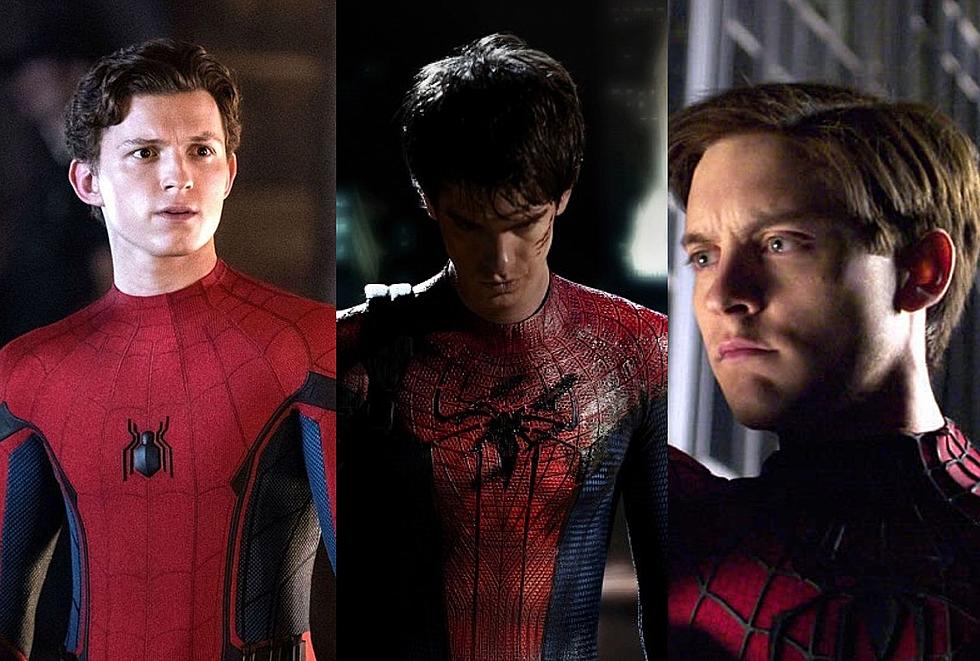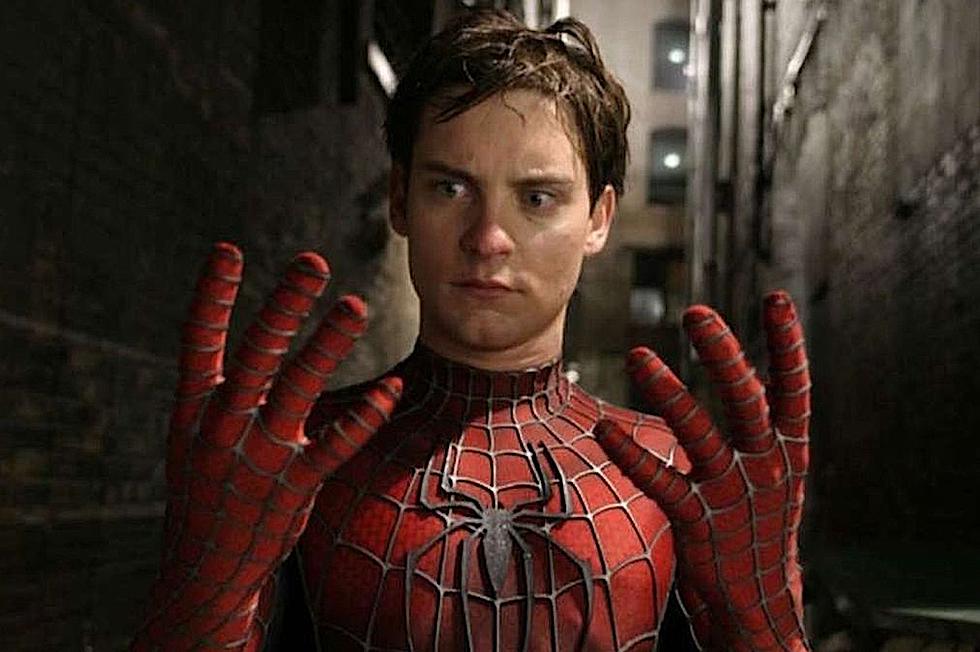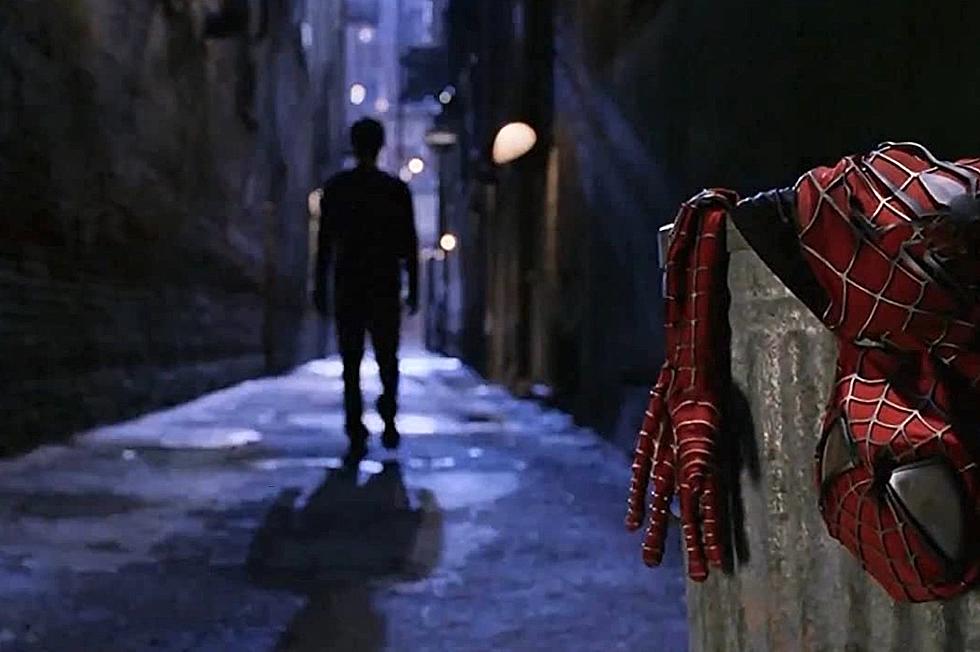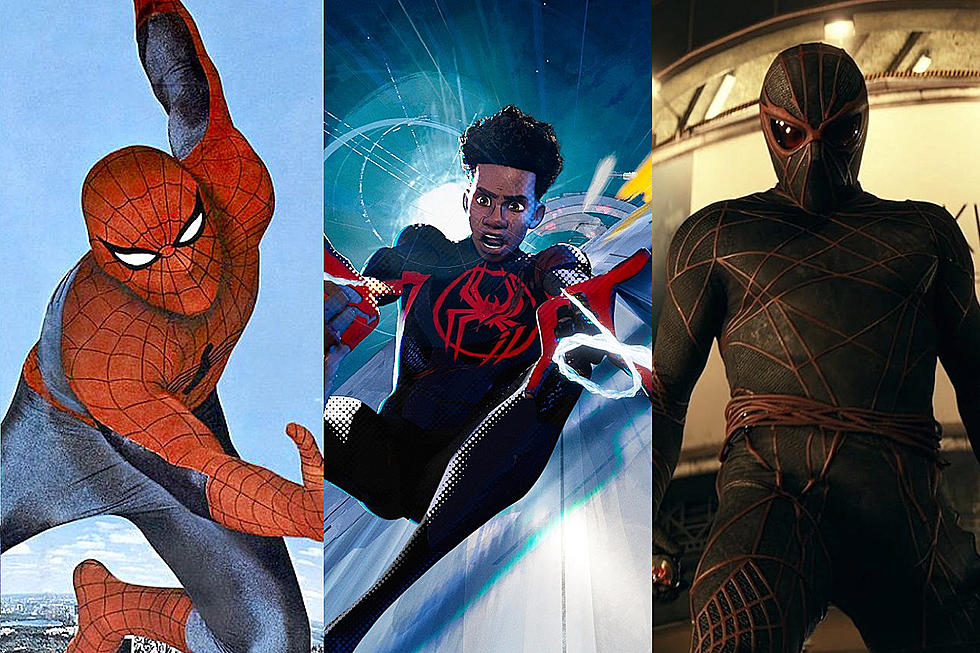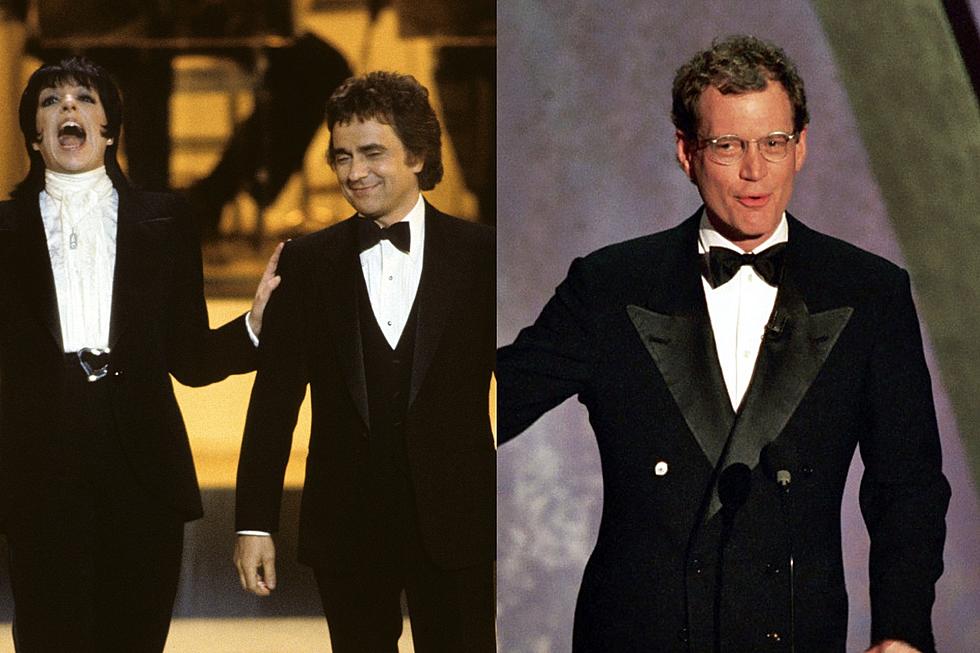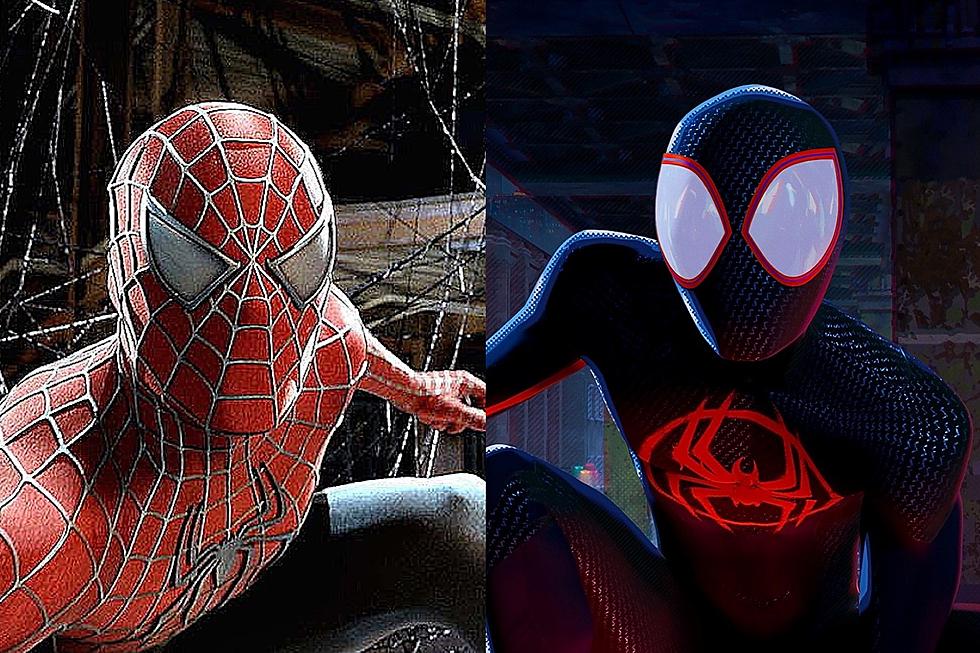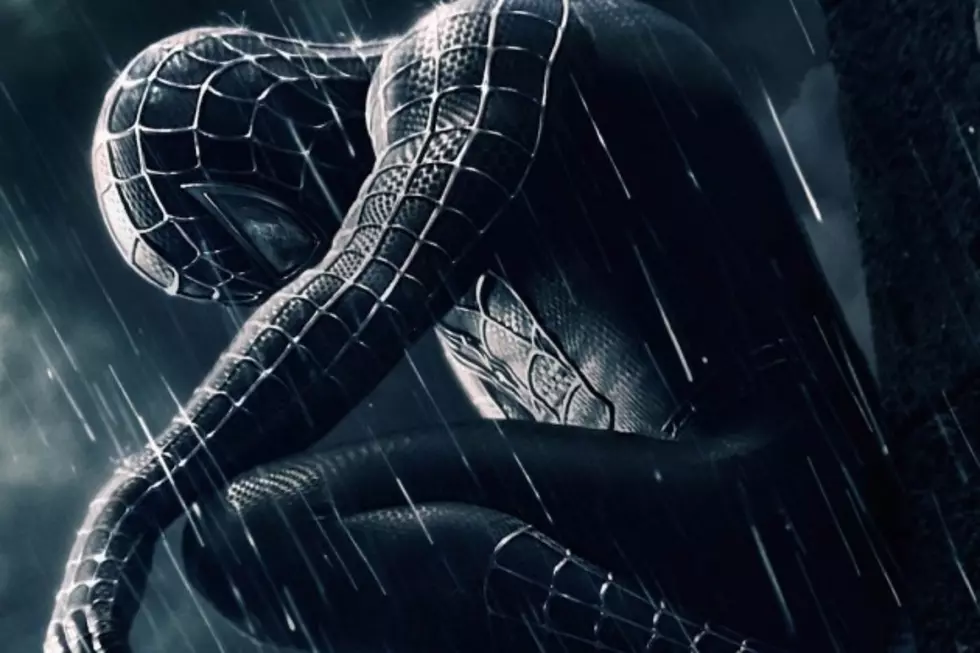
I Still Like ‘Spider-Man 3,’ Even If Sam Raimi Doesn’t
For any movie, rock bottom comes when its own director turns on it. For the much-maligned 2007 film ‘Spider-Man 3,’ rock bottom arrived earlier this week when its director, Sam Raimi, publicly admitted his dislike for his own film. On the Nerdist podcast, Raimi said:
It’s a movie that just didn’t work very well. I tried to make it work, but I didn’t really believe in all the characters, so that couldn’t be hidden from people who loved ‘Spider-Man.’ If the director doesn’t love something, it’s wrong of them to make it when so many other people love it. I think [raising the stakes after ‘Spider-Man 2’] was the thinking going into it, and I think that’s what doomed us. I should’ve just stuck with the characters and the relationships and progressed them to the next step and not tried to top the bar.
Raimi is echoing what most critics and fans have been telling him for the last seven years. ‘Spider-Man 3’ had the lowest Rotten Tomatoes rating of any film in the franchise (until this year’s ‘Amazing Spider-Man 2’), and it made less money in the U.S. than either of its predecessors. For many, it represents not only the lowest-point of the Spider-Man series, but for comic-book movies as a whole; the conclusion of Raimi’s Spider-trilogy routinely ranks among the worst superhero movies ever. (See: this, and this, and this, and this, and this.) No wonder Spidey looks so sad on the ‘Spider-Man 3’ teaser poster; everyone hates his movie.
Well, not quite everyone. You’d be hard-pressed to find an argument that ‘Spider-Man 3’ is Raimi’s best Spider-Man movie, or even that it’s an unqualified success. Certainly it is a film with a few problems, including a couple significant ones. But it’s also a better production than it gets credit for—even from its own director. It’s a strange experience that’s not to everyone’s taste. But to those on its quirky wavelength, it is a severely undervalued film—and maybe the most underrated comic-book movie of all time.
It’s not hard to understand, however, why many audiences rejected it. ‘Spider-Man 3’ is weird. Its hero undergoes several shifts in personality, from selfless savior to emo-haired prick. Its villains include a living costume, a sentient pile of sand, and James Franco. Its tone shifts wildly, from comedy to melodrama, sometimes within the space of a single scene—or even a single shot. One character loses their memory and then gets it back. There are not one, not two, but three musical numbers. The whole thing is full of unpredictable twists and turns.
‘Spider-Man 3’ was not only weird, it was also hopelessly out-of-touch with the zeitgeist. It opened in 2007, as Christopher Nolan’s Dark Knight trilogy whetted the audience’s appetite for ultra-serious superheroes. Raimi’s ‘Spider-Man 3,’ in which Spider-Man uses his wall-crawling powers to make a woman jealous through acrobatic jazz dancing, has more in common with the ’60s Batman series—where Adam West famously boogied to “The Batusi”—than anything Nolan was making in the 2000s.
In some ways, ‘Spider-Man 3’ actually feels like a deliberate rebuke to the “grim and gritty” trend in comic-book movies. Raimi’s quote above describes characters he “didn’t really believe in”—almost certainly a reference to Venom, the Spider-Man baddie Raimi only included in the film at the behest of series producer Avi Arad. As early as the 2006 San Diego Comic-Con, Raimi spoke publicly about his disinterest in the character; he objected to his “lack of humanity,” and said he was in the movie because he’s “a character that the fans love”—not necessarily because he’s a character that Sam Raimi loves.
Venom was first introduced in the late 1980s, as comic books were gripped by their own “grim and gritty” trend. With his black costume, massive muscles, and drooling, inhuman maw, he was a kind of modern update of the quarter-century-old Web-Slinger: More violent, more serious, and explicitly darker than his light-hearted counterpart. That Venom would be the perfect villain for a more Nolan-esque Spider-Man movie.
Instead, Raimi went in almost the complete opposite direction, and mostly used Venom as a punchline. When its evil alien goo infects Peter Parker (Tobey Maguire) it doesn’t make him into a monster; it makes him a buffoon. He dresses in tacky clothes, swaggers down the street finger-gunning ladies, and punctuates his conversations with J. Jonah Jameson (J.K. Simmons) with hilarious hair tosses.
Raimi may not have set out to deliberately diminish Venom, or to push back against the rising tide of humorless superheroes; all of Raimi’s franchises eventually transition from sincerity to silliness (see: ‘The Evil Dead’). But either way, that’s sort of what happened.
It didn’t help matters when Raimi picked Topher Grace to play Venom’s alter ego, Eddie Brock. But Grace’s contentious casting, and a new backstory that made Brock less of a imposing beast and more of an obnoxious sleaze, were important to ‘Spider-Man 3’’s motif of evil doubles. Grace’s Eddie Brock is more of a doppelgänger for Peter Parker than the comic-book version ever was; he’s a fellow freelance photographer for the Daily Bugle who hustles for pictures of Spider-Man, and with his slight build, he looks very similar to Maguire. And there are doubles throughout ‘Spider-Man 3’: There are good and bad versions of Peter (before and after he puts on the Venom suit), and good and bad versions of Harry Osborn (James Franco, before and after he bangs his head and suffers from amnesia). Peter has two love interests—his longtime girlfriend Mary Jane Watson (Kirsten Dunst) and his new classmate Gwen Stacy (Bryce Dallas Howard)—and the film is littered with shots of Peter or his alter ego reflected in mirrors, buildings, and framed Daily Bugle front pages.
For all the goofing on Venom, Raimi also uses him effectively as a way to tie all these doubles together, and to connect them to the screenplay’s themes about forgiveness and revenge. Almost every major character in the film is wronged by one of the other major characters—Peter by Sandman (Thomas Haden Church), who murdered his uncle; Harry by Peter, who murdered his father (or so he believes); Mary Jane by Peter, who is too distracted by Spider-Man’s fame to support her during a rough time; Eddie by Peter, who reveals Eddie’s forged photographs and ruins his career. Each must then choose whether to forgive the others for their mistakes, or to let their anger consume and destroy them. The Venom suit itself serves as a blunt but effective symbol of that rage.
Some of the criticism against ‘Spider-Man 3’ strikes me as short-sighted. People often complain about the randomness of Venom’s arrival on Earth (in a park where Peter happens to be spending time with Mary Jane), and of Eddie Brock walking into the exact same church where Peter’s about to rid himself of the symbiote. But nobody complains how random it is that the radioactive spider bites Peter, or that the same thug that Spider-Man let escape from the wrestling match is also the guy who kills Uncle Ben. The world of ‘Spider-Man’ is defined by chance; the message of Peter Parker is about refusing to let life’s inevitable and inexplicable defeats get you down. All of the elements of the Venom character in this movie fit perfectly into that world.
Still, there’s some stuff that flat-out doesn’t work. Raimi does seem to minimize Venom and delay his entrance into the story as long as possible. That short-shrifts Eddie Brock’s development, and turns the inevitable Sandman-Venom team-up into a unmotivated afterthought. It also makes Peter’s turn to the dark side happen much too quickly. Seeing the suit slowly infect Peter’s personality would have made his arc much more interesting—and it would have explained the single worst moment in the film, when Peter (as Spider-Man) kisses Gwen Stacy in full-view of Mary Jane, and then acts totally shocked when she’s upset about it. Either Peter falls under the black costume’s power way before we see it happen onscreen, or he’s the dumbest man on Earth.
But that’s no reason to throw the spider-baby out with the web-fluid. Not when a film contains some of the coolest Spider-Man action (like his mid-air rescue of Gwen Stacy, or his underground attack on the Sandman), and funniest set-pieces (Peter’s bumbling marriage proposal, at a French restaurant maître d-ed by Raimi buddy Bruce Campbell) of the entire franchise. How could a movie that features amazing sequences like the final team-up and reconciliation between Peter and Harry, and Jameson getting scammed by a little girl out of $100, be one of the worst superhero movies ever?
After Sam Raimi’s comments started spreading across the Internet like an evil alien symbiote looking for new host, I re-watched ‘Spider-Man 3’ and really enjoyed it. I watched it with my wife, who’s not nearly the Spider-Man nerd I am, and she liked it too—gasping when Evil Peter smacks Mary Jane, and getting choked up during the last scene between Peter, Harry, and MJ. She also made a pretty astute observation about ‘Spider-Man 3’ and why some people don’t like it: “This looks more like a comic book than a lot of comic-book movies,” she noted during the early chase scene between Peter and Harry. When I pressed her for more details, she added “Instead of a comic-book that’s been transplanted to the real world, this is more like real people who’ve been transplanted into a comic book.”
She’s dead-on—and she’s inadvertently explained why some people hate ‘Spider-Man 3.’ The Nolan Batman movies are the comic-book-in-the-real-world model; if you want every comic-book movie to look like ‘The Dark Knight,’ then of course you’re going to hate ‘Spider-Man 3.’ Personally, I enjoy the Nolan model, but I like my comic-book movies as diverse as my comic books—and part of what I enjoy about ‘Spider-Man 3’ is just how comic-book-y it feels. It’s got tons of characters and subplots, in the same way that an ongoing comic always sets up future storylines (like the Captain and Gwen Stacy stuff) even as it wraps up old ones (like the Peter and Harry feud). It’s full of wacky humor and heartfelt soap opera, the same way the old ‘Amazing Spider-Man’ comics would feature ten pages of Spider-Man cracking jokes and end with Peter devastated because he couldn’t pay his rent or just got dumped by Betty Brant. The combination of bold colors, surreal comedy, and intense pathos arguably make ‘Spider-Man 3’ the closest Spider-Man film in spirit to the original Stan Lee and Steve Ditko comics, which were silly and bizarre and intensely passionate all at once.
In ‘Spider-Man 3,’ Spider-Man becomes New York City’s hero, but falls out of favor with the public after he gets framed for a crime by Eddie Brock. It’s as if the movie predicted its own reception; following the incredible success of ‘Spider-Man’ and ‘Spider-Man 2,’ Spidey had almost become too popular. Both onscreen and off, he was due for a regression to the mean. But a lot of the things viewers hate about ‘Spider-Man 3’—the off-kilter jokes, the raw emotions, Spider-Man dancing—are exactly what I love about it. Comic-book movies are increasingly big business for studios, and while many of them are still enormously entertaining, few are ever permitted to be as peculiar as ‘Spider-Man 3.’ Give me this kind of singular experience over the soulless, pre-digested sameness of ‘The Amazing Spider-Man’ series any day of the week. Let comic-book movies feel like comic books.
More From ScreenCrush
